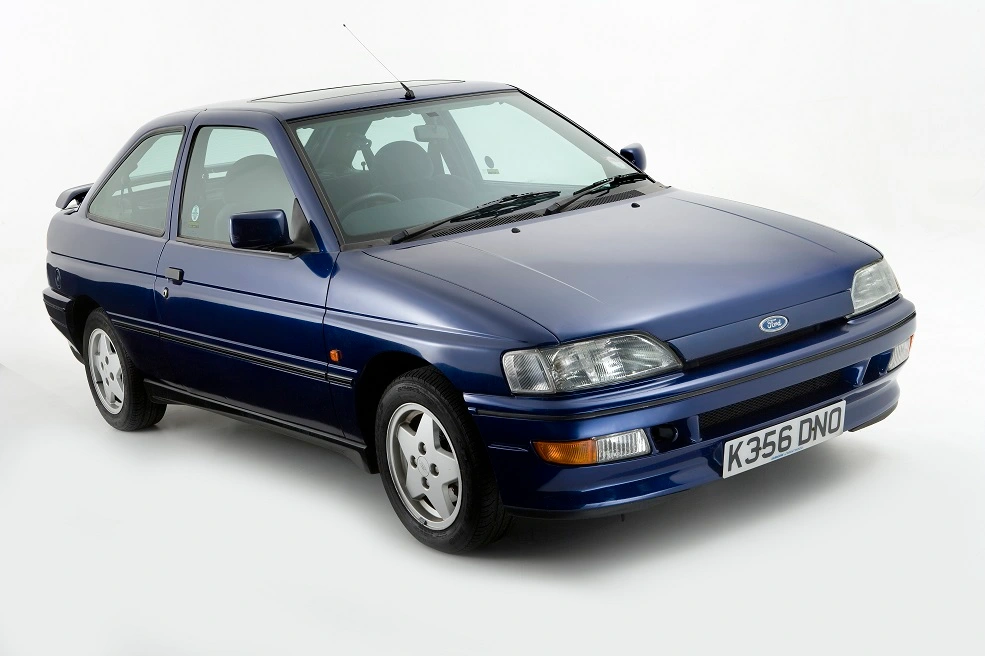The Ford Escort is a car from Ford’s bread-and-butter lineup. It’s based on the Mazda B platform and was built in Britain. It’s also sold in New Zealand. In our test programme, we drove it in varying climates and covered a range of driving conditions to gauge its refinement and ride.
Escort is Ford’s bread-and-butter car
For many years, the Ford Escort was the bread-and-butter car for the Ford Motor Company. Introduced on Sept. 2, 1980, the Escort was the automaker’s first defense against imports. It replaced the Pinto, which had a reputation for burning rear quarters. Since its debut, the Escort has sold more than seven million cars worldwide. More than four million were sold in Europe. It received a minor facelift in the spring of 1988.
The new Escort faces a marketing challenge: ensuring that it has an aspirational image. Its advertising agency, Ogilvy & Mather, has experience with other cars that have been successful in establishing an aspirational image, such as the Ford Ka. The car was positioned as a fashionable, youthful car. It was designed to compete against the Fiesta, which was marketed as a plain car for the middle class.
It was built in Britain
The Ford Escort was the first Ford car to be built outside the US. It was six years old when it first appeared in the UK and sold well. Over 60% of the car’s two million units were produced in Britain. Production in West Germany peaked at 150,000 cars per year, before falling to just 78,604 in 1974.
The Ford Escort was built on three basic platforms. The model’s interior was a surprisingly uncompromising affair. Although there are a number of “Mark” versions, the original British 100E Squire estate is the most popular model. Ford has used conflicting “Mark” numbers for its various improvements, but its official convention refers to four generations. The Mk3 and Mk4 models are referred to internally as “Erika” cars.
It was sold in New Zealand
The Ford Escort was a popular vehicle sold in New Zealand until the late 1980s. The Escort was available in four different models, all of which had different levels of equipment. The base model was equipped with a 1.1 L engine, while the higher-end Ghia models were equipped with a 1.3 L engine. Most models had a three-speed automatic transmission.
The Ford Escort was locally manufactured in Wiri, South Auckland. The Mk3 model was badge-engineered from the Mazda 323 and was therefore cheaper to build than the Escort Mk3. Some Escorts were exported from mainland Europe and England, and some were exported to Australia.
It was based on the Mazda B platform
Mazda is a Japanese automaker that started out in the 1920s. Jujiro Matsuda founded the company in Hiroshima, Japan. In the early 1960s, the company began developing rotary engines. These engines were lightweight, efficient, and low-maintenance. Mazda eventually offered rotary engines in nearly all of its vehicles. Because of their light weight and efficiency, they were a popular choice among drivers. The company also produced machine tools. The Mazda B platform was used in the Ford escort, Lincoln Navigator, and Mercury Cougar.
Ford and Mazda have a long history of collaboration. The first vehicle to share a platform was the Mazda B, which was sold in North America as the Ford Courier. The Mazda B platform was also used in the Ford Escort and Ford Probe in later years. Mazda also helped Ford design and produce the Ford Explorer, which became one of the best-selling cars in the United States. Later, Mazda built a two-door version of the Ford Explorer, but it didn’t make as much of an impression.
It was discontinued in 2002
In the late 1980s and early 1990s, Ford introduced the Escort as a replacement for the popular Ford Pinto. It was a highly popular vehicle in North America and was released in other markets around the world. The Escort had a long production run and was one of Ford’s best-selling vehicles for many years. But it was eventually discontinued in 2002, and Ford no longer produced it. There are not many Escort parts available for sale, and the model no longer receives new product developments.
The Escort shared its platform with the Mazda 323/Protege and was powered by a 1.5-liter gasoline engine. This engine sent power to the front wheels via a six-speed manual transmission. The Escort was similar to the Focus in size, but the Escort was slightly smaller than the Focus. In other markets, it was sold alongside the Mercury Lynx. In China, the Escort occupied a niche below the flagship Taurus sedan and the Mondeo.


